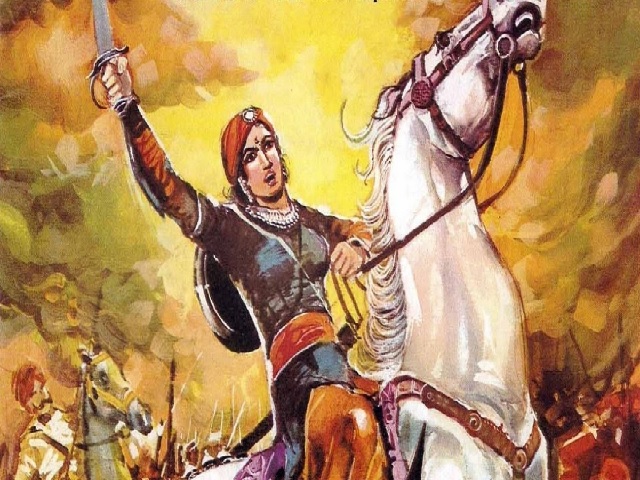Rani Laxmibai Death Anniversary: Know about the birth, early life, battles, and education of Jhansi Ki Rani today

Rani Laxmibai Biography:
Popularly known as the Jhansi Ki Rani, Rani Laxmibai was an Indian queen of the Maratha state of Jhansi in Northern India, (which is the current Jhansi district in Uttar Pradesh, India). One of the leading figures of the Indian rebellion of 1857, Rani Laxmibai became a symbol of resistance to the British Raj for Indian nationalists. Rani Laxmibai died on 18th June 1858, and on her death anniversary, let’s more about her in this biography article.
Birth and early life of Rani Laxmibai:
Born on 19th November 1828, Rani Laxmibai was born as Manikarnika Tambe in a Marathi Karhade Brahmin family to her parents Moropant Tambe (Father) and Bhagirathi Sapre (Mother). Laxmibai’s mother passed away at a young age when she was just four, and her father used to work for the Peshwa Baji Rao II of the Bithoor district.
Rani Laxmibai Education:
In spite of receiving her basic education at home, Laxmibai was trained in reading, writing, shooting, fencing, and mallakhamba. A proficient in horsemanship, Laxmibai also had three horses namely, Sarangi, Badal, and Pavan.
Rani Laxmibai Personal Life:
Married to Gangadhar Rao Newalkar (Maharaja of Jhansi) as Manikarnika in May 1851, she was renamed as Laximai as per the traditions. Laxmibai gave birth to her son Damodar Rao in 1952 but died after 4 months. Later on, the couple adopted Gangadhar Rao’s cousin who was renamed, Damodar Rao.
The adoption was carried out while following all the legal proceedings, in the presence of a British Officer, and even a letter was given to the officer from the Maharaja stating the instructions that the adopted child must be given with due respect, and Jhansi shall be handed over to Laxmibai for a lifetime.
However, after the death of Maharaja in November 1853, the East Indian Company applied the Doctrine of Lapse under the governance of Governor-General Lord Dalhousie. Due to this, the claim of Damodar Rao from the throne of Jhansi was revoked considering him as the adopted child of Maharaja and Laxmibai.
By March 1854, Laxmibai was directed to leave the palace of Jhansi and was offered a sum of Rs. 60,000 annually in return.
Related videos
-
Pride Month 2025: Rani Ko-HE-Nur Shares Her Dream Collaboration And Queer Representation ...
-
Chaitra Navratri 2025: कब मनाया जाएगा चैत्र नवरात्रि? जानें कलश स्थापना की तिथि ...
-
Ayesha Kapur Wedding: Amitabh Bachchan’s Black Actress Ties Knot With Boyfriend Adam Oberoi ...
-
What was the real reason for the fallout between Aishwarya Rai and Rani Mukerji’s Sisterly ...









